The OMFV program is a promising infantry fighting vehicle for the US Army
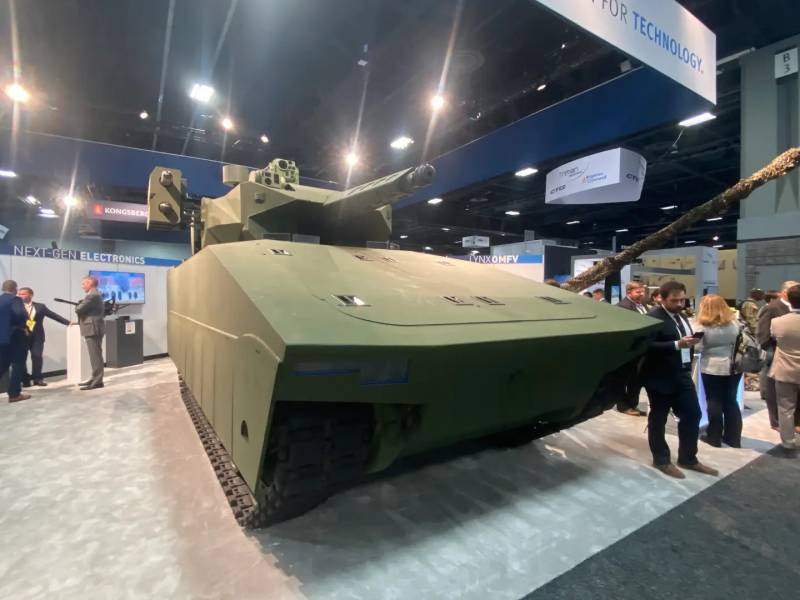
Full-size layout of the BMP Lynx OMFV, 2022
The Pentagon is again trying to create a promising infantry fighting vehicle and replace it with the existing M2 Bradley. A few years ago, for this purpose, another, already the third, competition of this kind was launched. To date, the OMFV program has passed the first stages and entered the stage of full-fledged competitive development of projects. In the foreseeable future, it should reach the construction and testing of experimental armored vehicles.
Prospective program
After the failures of the Future Combat Systems and Ground Combat Vehicle programs, closed in 2009 and 2014. accordingly, the US Army launched a new competition to create advanced armored vehicles. In June 2018, the Next Generation Combat Vehicle (NGCV) program was launched, the goal of which was to create a new BMP to replace the Bradley. Just a few months later, it was renamed Optionally Manned Fighting Vehicle (OMFV) - “Optionally Manned Fighting Vehicle”, and this name is still used today.
The first version of the terms of reference for the OMFV provided for the development of a medium-weight infantry fighting vehicle, the main characteristics of which are not inferior or superior to the existing M2. At the same time, it was necessary to ensure the possibility of working in the "normal" and unmanned version. In addition, the Pentagon wanted the OMFV to be able to interact on the battlefield with the robotic systems of the promising RCV family. They wanted to receive the first prototypes of the new technology in the early twenties, and the start of mass production was planned for 2026.
Some potential contractors considered the requirements too bold and unrealistic. Because of this, only two projects participated in the competition, and only one of the presented prototypes was considered suitable for further development by the army. However, this did not allow for comparative tests, and the prospects of the program were called into question.
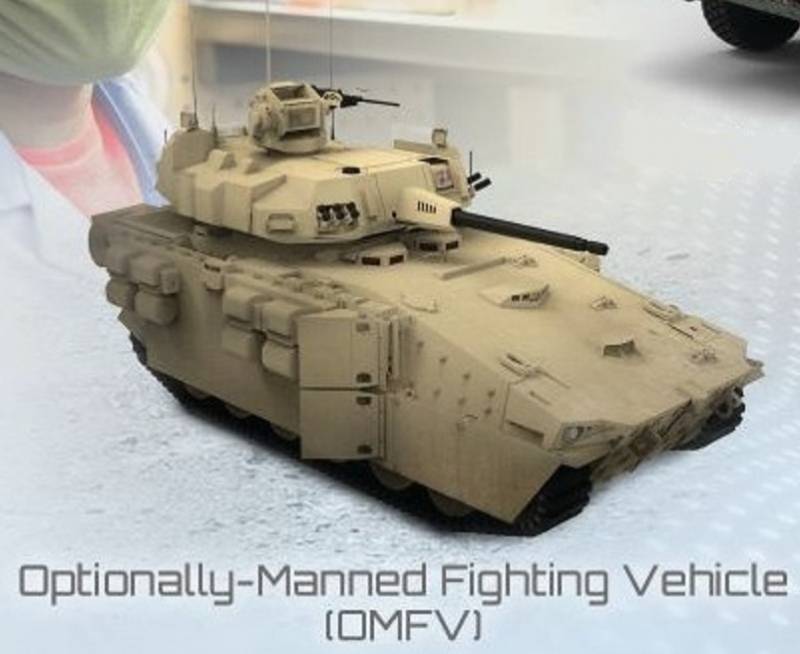
Design appearance of the BMP from GDLS
New attempt
In the wake of this setback, in the first months of 2020, the Pentagon decided to restart the OMFV program with a review of the requirements. In the updated terms of reference, the most complex concepts in the field of unmanned technologies, etc. were abandoned. The main goal now was to increase the level of protection and firepower - for this it was allowed to sacrifice mobility and mobility.
In July 2021, the Pentagon completed the 1st "phase" of the program, during which it accepted and considered applications from future contestants. At this stage, five preliminary projects were selected from US companies and local branches of foreign organizations, which moved to the next phase 2. The contestants received contracts worth $26,6 million each to develop full-fledged projects. Relevant documentation was required to be submitted by November 1, 2022.
At the end of June 2023, the US Army named the winners of Phase 2, who were to move on to the next stage and continue to work. The projects of General Dynamics Land Systems and Rheinmetall North America (in cooperation with Raytheon, Textron, etc.) were considered the best. It is curious that the Pentagon had previously planned to select three finalists, but the growth in development costs and financial constraints forced it to manage with only two projects.
The OMFV program is moving forward successfully, and at the start of the 3rd phase of the future BMP, they assigned their own designation - XM30. Apparently, it indicates the expected year the vehicle was put into service. In the future, after the launch of production and adoption, the letter “X” will be removed from this index.
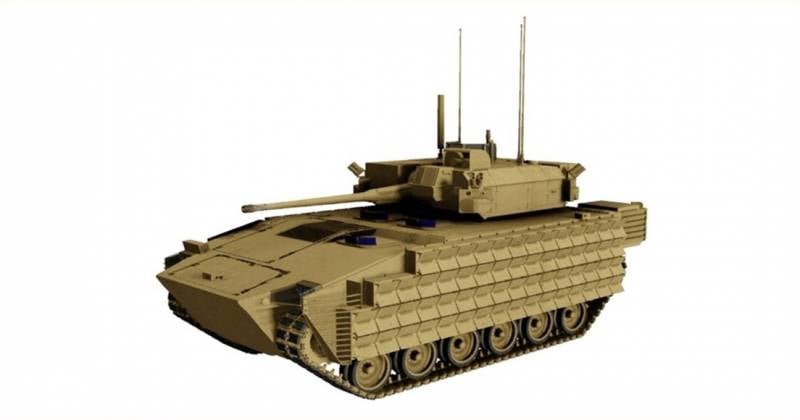
GDLS offers various additional booking options
A month later, a curious news. BAE Systems, Oshkosh Defense and Point Blank Enterprises, which dropped out of the program, did not file a protest and demand a revision of Phase 2. The Pentagon was afraid of such a development of events, because. it should have negatively affected the course of the OMFV as a whole. Fortunately for him, the losing companies did not stand up for their rights and interfere with the plans of the army.
Plans for the future
The recently launched Phase 3 of the program provides for full-fledged project development. Participants must complete this work before the start of fiscal year 2025 - October 1, 2024. Then they will be able to start building prototypes for comparative testing. Assembly and testing are allocated to the next Phase 4. A total of $ 3 billion will be spent on stages 4 and 1,6 of the OMFV program - they were equally divided among the participants.
By July 1, 2025, the Pentagon wants to receive seven prototypes from two participating companies. There is an option for four additional products. For various tests, two full-fledged armored hulls will be manufactured, as well as individual components and assemblies.
Comparative tests of two types of infantry fighting vehicles will last about a year, and in July 2026 the customer is going to start analyzing the results of these activities. In January 2027, the Pentagon will name the winner of the competitive part of the program and give him an order for pre-series production "at a slow pace." The assembly of XM30 machines under this contract will begin no later than the autumn of the same year. A year later, by September 2028, the customer wants to send the first battalion kit to the troops.
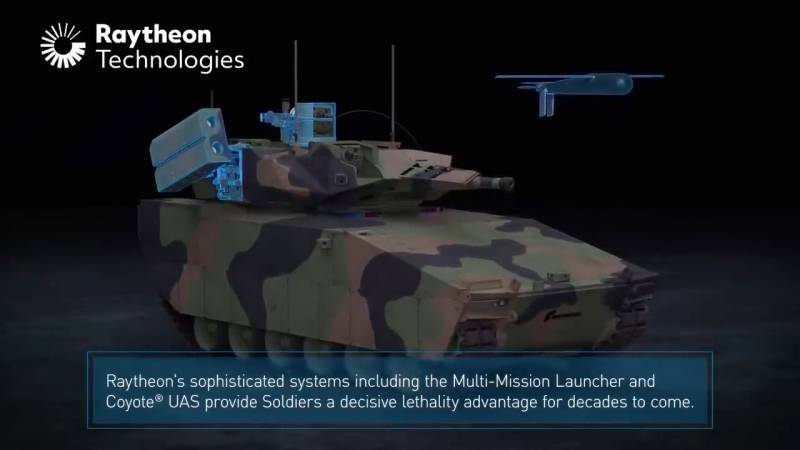
Lynx OMFV and its armament - DBM and universal launcher highlighted
Then they will spend about a year preparing the production line, mastering the equipment in the troops and, if necessary, further fine-tuning the project. Serial production will start in early 2030. How long the M30 product will be in the series has not yet been reported. The quantitative plans for such production are not specified either.
Contestant cars
In 2018-20 GDLS participated in the first OMFV competition with an infantry fighting vehicle project based on the Griffin III platform. After restarting the program, she rebuilt this project using an upgraded Griffin IV chassis. Due to this, it was possible to fulfill the updated requirements of the customer and improve some characteristics.
The OMFV from GDLS is a front-engine tracked vehicle with an aft troop compartment. Provides advanced booking with the ability to install overhead elements; the level of protection was not specified. Armament is housed in an optionally manned large turret. Main weapons is the 50mm XM913 automatic cannon; there is an additional DBM with a machine gun. The combat weight of such an infantry fighting vehicle, depending on the configuration and configuration, can reach 50 tons.
A consortium led by Rheinmetall proposes another development option for the existing KF41 Lynx project for the OMFV competition. In terms of overall architecture, the Lynx OMFV product does not fundamentally differ from the BMP developed by GDLS - the engine and driver's seat are located in the bow, behind them is the fighting compartment, and the stern is given to the landing force. The hull and turret have steel armor and can be fitted with overhead modules. The infantry fighting vehicle received an uninhabited Rheinmetall LANCE 5030 turret with an XM913 cannon, a machine gun and a launcher for missiles or UAVs. The combat weight of the vehicle can reach or exceed 50 tons.
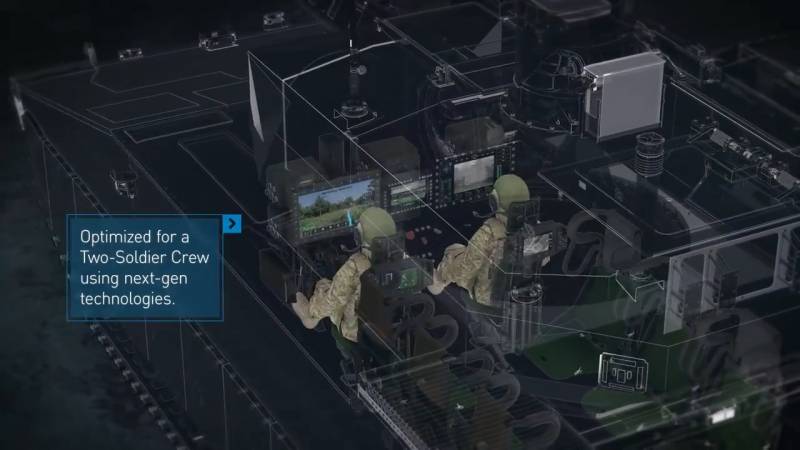
Lynx OMFV control compartment layout
Two projects of the promising BMP XM30 OMFV are created on a different basis, but according to a common technical task. As a result, they must have common features and close characteristics. However, the same tasks of an engineering nature are solved in different ways, and two machines must have certain differences. In addition, differences in the composition of weapons are already visible. The Pentagon will have to study all the features, similarities and differences, and then determine which of the two samples is more suitable for its requirements and needs.
Real results
Formally, the program to develop a promising BMP for the US Army started back in 2018, but the first attempt was unsuccessful. The Pentagon wanted too much and did not find understanding on the part of possible developers, which is why the competition failed. In 2020, the program was restarted with a major revision of the requirements, and as such, it is gradually delivering the desired results.
To date, the companies participating in the competition have decided on the general provisions of their projects and have begun their full-fledged development. In addition, they have already shown the appearance of future infantry fighting vehicles - so far in the form of mock-ups on a different scale. Nevertheless, work continues, and the design will be completed in about a year. In mid-2025, the customer will receive a dozen and a half experimental infantry fighting vehicles and related products that will be used in tests.
There is still a long way to go before the completion of comparative tests and the selection of a winner. Serial production and full operation of the new M30 infantry fighting vehicles generally belong to the next decade. Nevertheless, the competitive development has already entered the active stage and gives reason for optimism. The Pentagon can only hope that the program participants will use the available time wisely, and their projects will justify all the costs.
Information